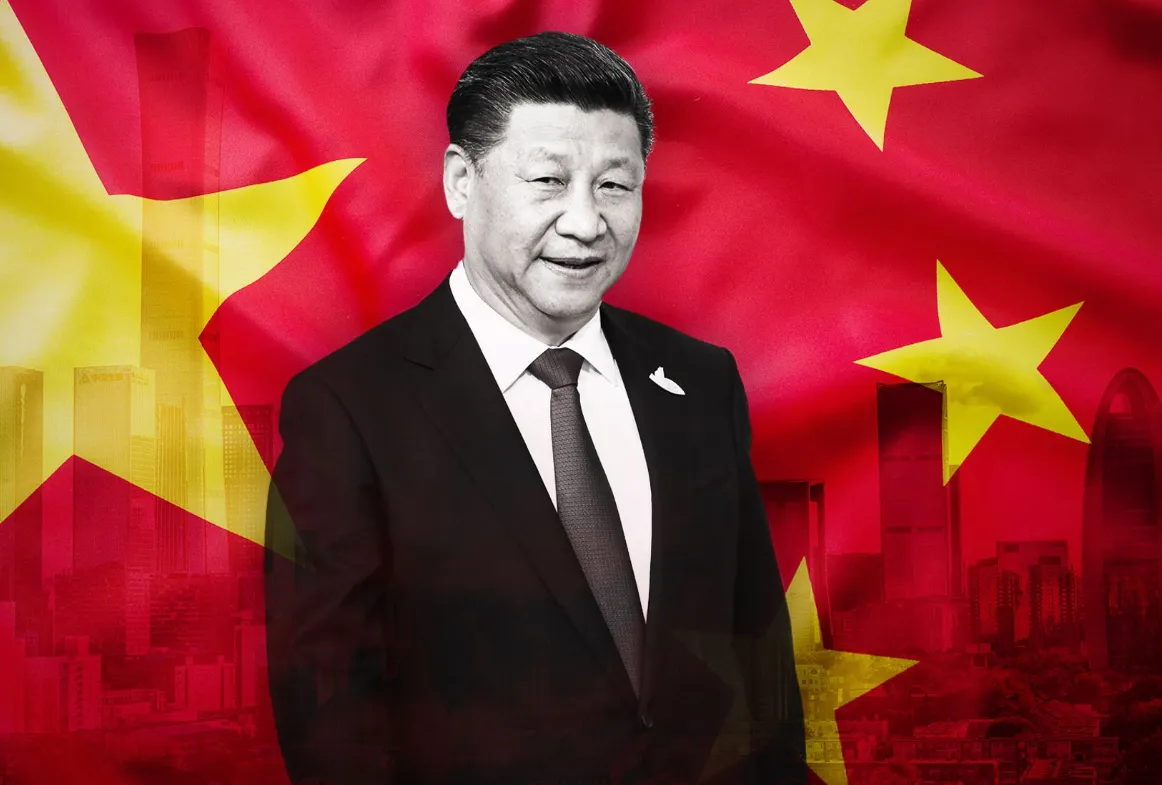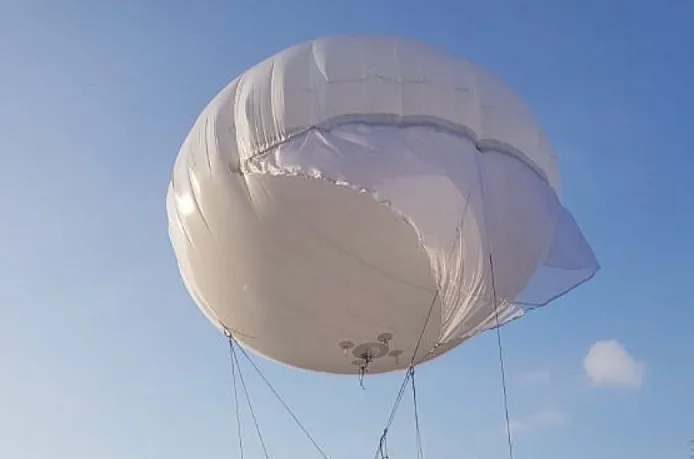Intimidation or Accident? The Psychology Behind China’s Spy Balloon
Why would China fly a suspected spy balloon into North America and leave it to float across the states just days before the US Secretary of State was to meet his counterpart in Beijing? Was it a power play or were there political pressures on President Xi Jinping to find an excuse to postpone the meeting?
Those are the kinds of questions former US State Department psychiatrist Dr. Kenneth Decleva and US officials were asking as Beijing’s unmanned balloon sailed from China to Alaska in early 2023, then drifted through northwest Canada before navigating into US airspace and over sensitive military installations. An F-22 jet fighter shot the blimp down off the coast of South Carolina, deflating hopes of repairing already strained relations between the US and China.
"The balloon has created distress and unease,” Dekleva said. “What if it were something worse than a mere balloon? That’s really the bigger issue. What if it were lower and a drone? What if it were a WMD (Weapon of Mass Destruction)? Those are the kinds of questions that keep our WMD experts up all night.”
US defense officials believed the blimp was a high-altitude surveillance device. China described it as a ‘civilian airship’ that mistakenly deviated from its planned route. A second balloon drifted over the Panama Canal and Latin America the same week, however, leading to questions about whether two Chinese balloons could have possibly blown off course or whether they were deliberately released.

"The brand new social experience where you activate your gaming skills as you train like a spy."
- TimeOut
Take on thrilling, high-energy espionage challenges across different game zones.

The mystery of China’s 'spy balloon'
Dekleva believes the US military started tracking the North American balloon long before it was spotted in US airspace. “Our military has impressive abilities - as do the Canadians - so this balloon didn’t suddenly drop out of the sky.”
So what was it doing there? Dekleva, a senior fellow at the George H. W. Bush Foundation for US-China Relations, keeps coming back to one question: “Why would they do this a mere couple of days before the scheduled meeting with Secretary of State Blinken where he is supposed to meet Xi Jinping?”
Dekleva has spent many years compiling psychological profiles of world leaders - including Xi Jinping - and he has weighed all of the political considerations. He’s come up with as many questions as answers.
“Why now? The Chinese have the ability to make things look right if they feel a visit is important. So why would they continue this [floating the spy balloon] - even if they’ve been doing this before? Why would they put this on hold? Why would they risk embarrassing the United States and possibly leading to the cancellation of the Blinken-Qin Gang talks, rather than proceeding?”
“Did someone drop the ball at the Chinese end - at the People's Liberation Army level - and not cancel this, or hold off on it in order to tow a harder line, if you will? Especially sending a psychological message to the new Congress led by the GOP where Speaker McCarthy has threatened to go to Taiwan. The message would be: “Okay, you can go to Taiwan and we can fly balloons wherever we want.”
There’s very little classified data the balloon can gather in Montana or in the northwestern US that likely isn’t already available through open-source intelligence or other methods. “We have sensitive military installations there - as recorded in the media - but it is well known where those bases are, so that’s the interesting part. Now it puts pressure on Secretary of State Blinken to delay his trip - cancel or delay.”
Which is exactly what happened. Blinken postponed his meeting with his Chinese counterpart as well as his opportunity to meet with Chinese President Xi Jinping.

Profiling Chinese leader Xi Jinping
One of Dr. Kenneth Dekleva’s many roles over the years has been to sketch psychological profiles of world leaders for the US government, a useful tool when strategizing about a difficult negotiation or an opponent’s limits. Dekleva studies the core characteristics of leaders and analyzes key data points - speeches, books, television appearances, secondary sources of information, the circumstances of the leader’s formative years, and much more.
Others are beginning to experiment with facial recognition software to examine micro expressions not visible to the human eye. “With leadership profiling, you’d apply it if they gave a speech or a press conference, and you can measure vital signs off of the micro expression. You can measure blood pressure, heart rate, and respiration. If the lighting is right you get some sense of their age - both chronological and some sense of their medical age.”
Dekleva’s leadership subjects include Russian leader Vladimir Putin, North Korea's Kim Jong-un, and China's Xi Jinping, so when China’s ‘spy balloon’ drifted into US airspace, the State Department already understood the mindset of those suspected of having set the balloon adrift but not the motivations.
“Xi is a fascinating leader who I’ve written is probably the most powerful leader in the world today,” Dekleva said. “He's also - contrary to what’s written in the media - a very successful leader if you look at a lot of the metrics in terms of what he's accomplished in 10 years… I would be careful betting against Xi. He’s a highly intelligent person.”
So was China’s mysterious balloon a malfunction or a carefully orchestrated mind game?

The psychology of high-level summits
Brinkmanship isn’t new to countries involved in high-level talks. In 2019, US President Donald Trump was scheduled to meet North Korean leader Kim Jong-un for a June summit in Hanoi.
Directly before that happened, the North Korean Embassy in Madrid was burglarized. Thieves reportedly stole mobile telephones, two pen drives, and a hard drive and handed them to the FBI. North Korean employees were assaulted and held hostage for several hours. The US and South Korea denied any connection to the event.
The North Koreans went ahead with the talks anyway because, at that time, they viewed their strategy at the summit to be more important than the break-in. Dekleva explained the mindset at the time: “They were looking at a more hopeful and positive ‘deliverable’ in terms of their strategic goals, and so was President Trump.”

Political pressure or a mistaken weather balloon?
The February 2023 meeting in Beijing differed from the North Korean summit, however. It was meant to signal a thaw in relations coming on the heels of a difficult meeting between China and the US in Anchorage in March 2021, which makes Dekleva circle back to his central question: Why?
“Why now? The Chinese have the ability to make things look right if they feel a visit is important. So why would they continue this [floating a spy balloon] - even if they’ve been doing this before? Why wouldn’t they put this on hold? Why would they risk embarrassing the United States and possibly leading to the cancellation of the Blinken-Qin Gang talks rather than proceeding?”
“It may be that there are different political pressures on President Xi, pushing him to find an excuse not to have this meeting,” Dekleva said.“And that would send a signal - which is a little bit contradictory to the signals that he has sent with his charm diplomacy since the 20th Party Congress where he has really come out and started traveling again,” he added. “People have wondered: is there a shift away from ‘wolf warrior’ diplomacy to a more gentler Chinese diplomacy? And this would kind of tilt the argument to ‘not really’. There may be a shift in tone but the objectives remain the same. The Chinese are playing GO while we are struggling to play Checkers.”
***
From 2002 to 2016, Kenneth Dekleva served as a Senior US diplomat and Regional Medical Officer / Psychiatrist with the US Department of State, mostly overseas, but also in a leadership role as director of the US State Department’s worldwide diplomatic mental health program. He can be contacted via SPYEX.com to appear at events or consult on speaking engagements and other projects.
SPYSCAPE+

Join now to get True Spies episodes early and ad-free every week, plus subscriber-only Debriefs and Q&As to bring you closer to your favorite spies and stories from the show. You’ll also get our exclusive series The Razumov Files and The Great James Bond Car Robbery!


Gadgets & Gifts
Explore a world of secrets together. Navigate through interactive exhibits and missions to discover your spy roles.
Your Spy Skills
We all have valuable spy skills - your mission is to discover yours. See if you have what it takes to be a secret agent, with our authentic spy skills evaluation* developed by a former Head of Training at British Intelligence. It's FREE so share & compare with friends now!
* Find more information about the scientific methods behind the evaluation here.


Stay Connected
Follow us for the latest
TIKTOK
INSTAGRAM
X
FACEBOOK
YOUTUBE